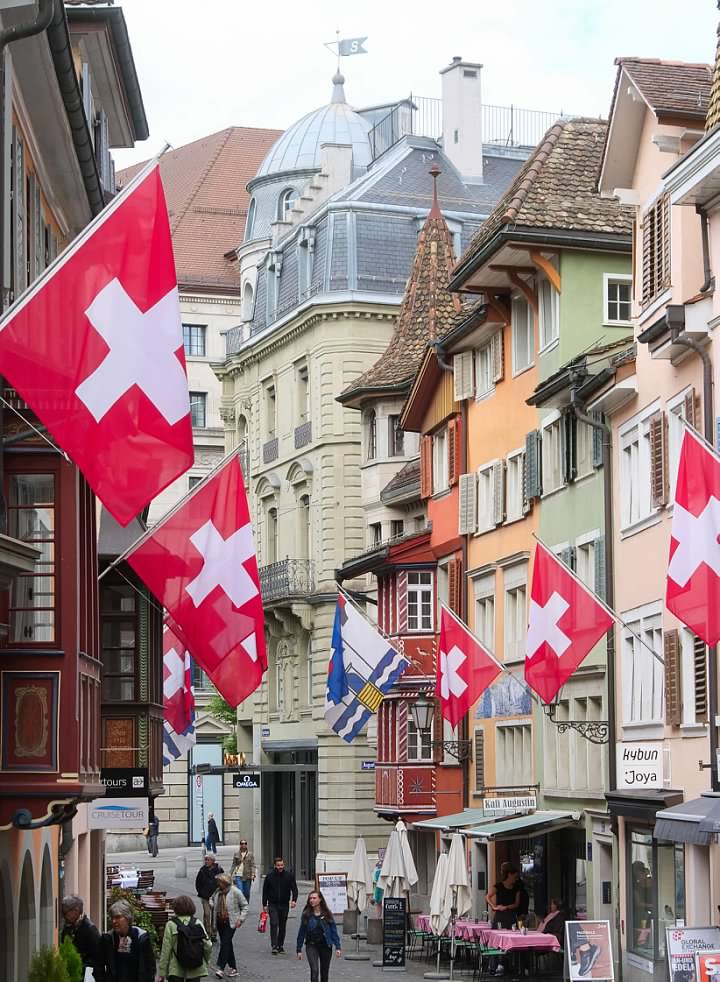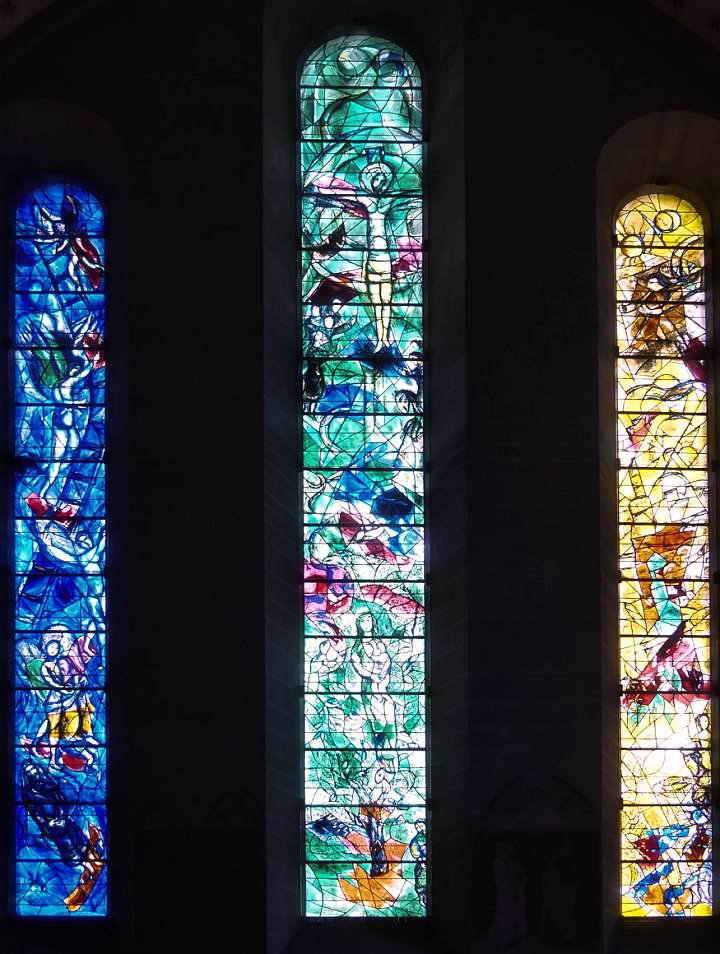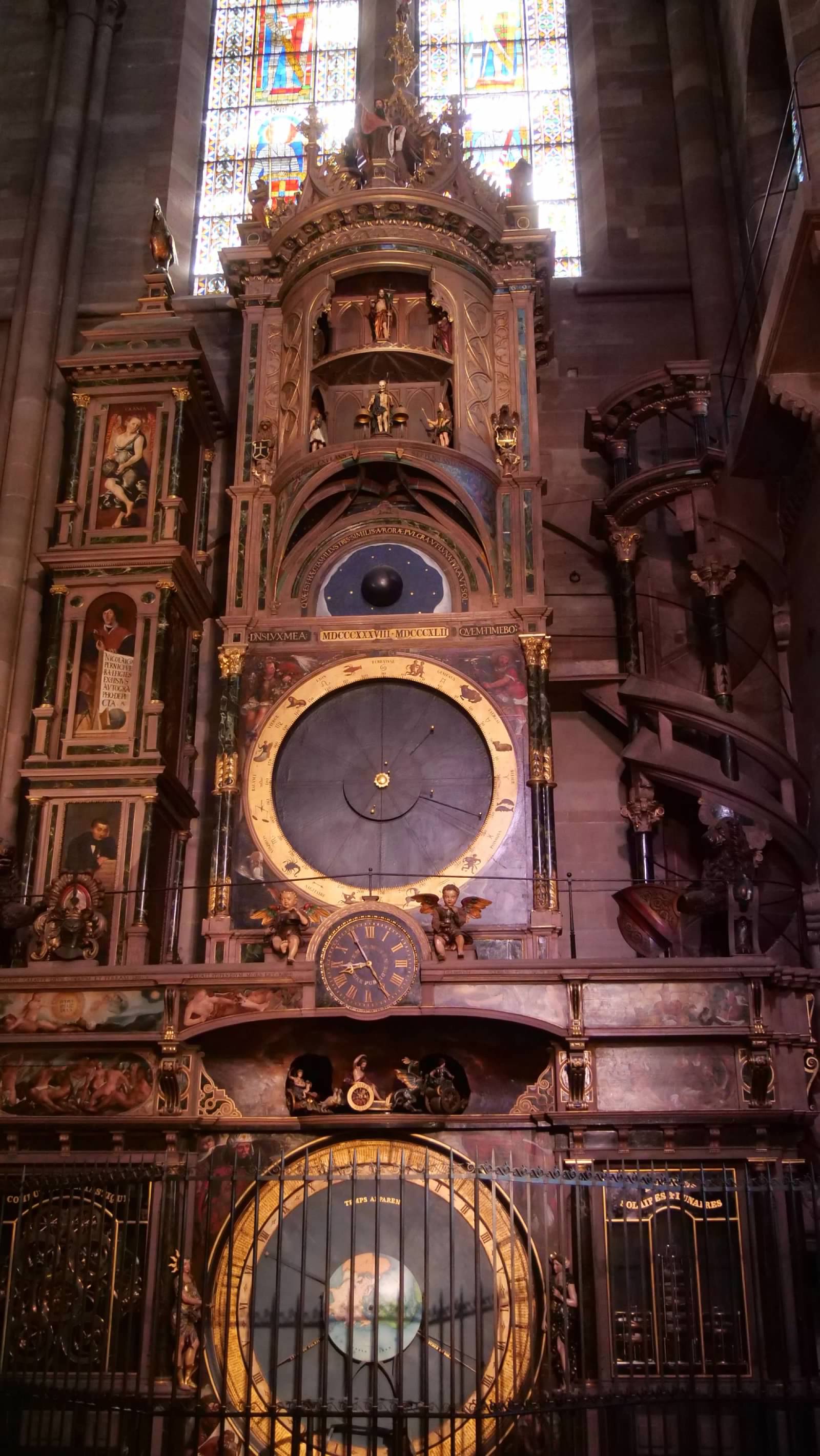Our bike tour was scheduled to begin with the tour guides picking us up in Basel, and while we could have book air fare directly to Basel, the airport their is small and required transfers to get to. Zürich has a major international airport, which made the air fare somewhat less expensive, and gave us an excuse to spend a couple of nights exploring this largest city in Switzerland. Before we left, I had purchased 3-day city passes that would cover all our public transportation in and around the city. It also included admission to a number of museums, and discounts at others. Perhaps most importantly, it covered the train from the airport into the city, so I wouldn't have to fuss with that when we arrived.
Zürich has an extensive and very user friendly public transportation network that includes buses, street trams, trains, and ferries, all using a single unified fare system. The fares are based on zones, and once you purchase the ticket that covers the zones you will be traveling through, it is good for any combination of transport to get you where you need to go. Of course, our city passes covered all of that, so we could just hop onto a tram or a train as we needed to. The entire system runs on an honor system...no one ever checked our passes during our time in the city, but passengers are subject to random checks, and the penalties for not having a ticket are supposed to be quite stiff, and fares are very reasonable, so getting a ticket is definitely recommended.

The plan was to spend two nights in Zürich before catching a morning train to Basel. With our flight arriving on Thursday morning, we would drop our luggage at our hotel (where we wouldn't be able to check in until afternoon, anyway) and head straight out to explore. We would also use Friday for sightseeing, before heading to Basel on Saturday. And that plan worked pretty well. When we got off the train from the airport at the central train station, it was raining, but we had remembered to bring umbrellas, so we didn't get too wet as we walked to two blocks to our hotel. After making sure we had what we needed for the day, we deposited our luggage in the hotel's storage room, and walked back to the train station, where we caught a train south to the suburb of Kilchberg, home of Lindt Chocolate. Our city passes included an admission discount for the Lindt World of Chocolate Museum, which was a short ten minute walk from the train station. Like Hershey, the museum is separate from the chocolate factory, but unlike Hershey, with its amusement park-like ride, the Lindt museum was both extensive and interactive, with lots of detailed exhibits on the history of chocolate, the processes used to make it, and, best of all, plenty of free samples.
From here, the plan was to go to the restaurant at Felsenegg, on the top of the ridge overlooking Lake Zürich. When we finished at Lindt, I checked the transit schedules on Google, and found that it would take two buses to get to the aerial tram up to the restaurant. According to Google Maps, the waits for the buses meant that the transit option would take the same amount of time as walking. By now the rain had stopped and the skies were clearing, so we decided to just walk. What we didn't realize is that there was another, lower ridge between us and our destination. The first half of our walk was a pedestrian path that went straight up that ridge. It was a bit of a workout, but that only fueled our appetite for the dinner we were anticipating when we reached our destination.
After about a half-hour walk, we arrived at the base station for the aerial tram to Felsenegg, finding it utterly deserted. However, the signs indicated that it was open and operating, and that the next tram would depart in about ten minutes. Looking up the mountain, we could see the trams moving on their cables. When our tram arrived, a handful of people exited, and we climbed aboard. The entire system was automated...we never saw any staff or operators. The doors opened and closed automatically, and when it came time to depart, the tram automatically started its return trip up the mountain. As the tram climbed, we took in the panoramic views, with Zürich off to our left, at the north end of Lake Zürich, and to our right, the lake stretching down to the mountains, which were still covered in clouds and mist.


Once we exited the tram at the top of the mountain, we had a short, five minute walk through the woods to the restaurant, which sat in a clearing at the edge of the mountain, with spectacular panoramic views of the valley and the lake below us. We were early for dinner by European standards (about 5pm), but the restaurant was open and we had our choice of seat since it was completely empty. Had the weather been a little more favorable, we might have considered eating outside on the deck, with the incredible view, but it was still chilly, and the risk that another party might sit out there and smoke kept us inside. It didn't take long to order...we knew what we wanted before we arrived. Sitting by the windows looking out at the valley, we enjoyed a rich, yummy cheese fondue, dipping our chunks of bread, ham, and pickles (this was a new concept for us, but very good) in the warm, creamy cheese. I washed mine down with a delicious pint of hard cider. It was a wonderful meal to start our trip, matched by the views.
Eventually, it was time to head back to our hotel. We reversed our path back to the tram and down the mountain, where we caught a train back to the central train station and our hotel. We checked in, collected our luggage, and settled into our accommodations for the next two nights.

On Friday morning, we set out to explore the historic center of the city. We visited the Grossmünster, a Romaneque-style church that was constructed in the 12th Century, but has been a protestant church since the Reformation. While architecturally interesting, the iconoclasm of the Reformation stripped it of any artwork that might have adorned it in the Middle Ages, leaving it rather stark inside. We also visited the Kirche Fraumünster on the other side of the river, which was also stripped of its Medieval art during the Reformation. However, in the 20th century, efforts to restore the church lead to the installation of new stained glass windows, including a number my Marc Chagall, which were very striking.

We also did a guided walking tour of the historic part of the city. We learned a great deal about the historic roots of this city, founded by the Romans, the importance of the different churches in the city's history, as well as information about the Swiss banking industry (which has been largely consolidated in one large bank, UBS), and the local foods.
After the tour, we visited the Beyer Clock Museum. Located in the basement of the Beyer Watch Shop on the Bahnbhoffstrasse, the home of Zürich's high end retail stores (brands like Gucci, Louis Vuitton, Prada, Cartier, Tiffany, etc.), this museum has an extensive collection of historic clocks and watches that show the development of the technology and artistry involved in making time pieces. While all the exhibits were labelled in German, we were given an iPad that had English descriptions of every item on display, so we could read about any of the items that caught our attention. The display began with water clocks from ancient Egypt, and progressed up through the incredibly ornate watches and clocks of the 19th and 20th century.
When we finished at the museum, we walked down to the shore of Lake Zürich, and then along the banks of the Limmat River until the rain returned as forced us inside to look for dinner. We found a restaurant where we had Rösti, a hashbrown-like dish that is popular in Switzerland. My wife's was topped with bacon and an egg, while I had salmon on mine. After eating, we meandered our way back to our hotel through the winding streets.

 After the boat tour, we visited the Cathedral. which began construction in the 11th century, and once completed was the tallest building in the world until 1874, and remains the tallest structure entirely built in the middle ages that survives intact today. it also contains an impressive astronomical clock that is a remarkable work of both engineering and art.
After the boat tour, we visited the Cathedral. which began construction in the 11th century, and once completed was the tallest building in the world until 1874, and remains the tallest structure entirely built in the middle ages that survives intact today. it also contains an impressive astronomical clock that is a remarkable work of both engineering and art.
 By the afternoon of our second day here, we had thoroughly explored the heart of the city, which was just as well, because we had to catch a train to Frankfurt, Germany, where we would spend the night before flying home. Our hotel near the train station felt like the world's smallest, but it was clean and the bed was comfortable, and we only needed a place to sleep. In the morning, we caught a S-bahn train to the airport and checked in for our flights home. We enjoyed a nice Irish lunch in Dublin during our layover, and our flights home were uneventful. We even arrived back at Dulles Airport a little bit ahead of our scheduled arrival.
By the afternoon of our second day here, we had thoroughly explored the heart of the city, which was just as well, because we had to catch a train to Frankfurt, Germany, where we would spend the night before flying home. Our hotel near the train station felt like the world's smallest, but it was clean and the bed was comfortable, and we only needed a place to sleep. In the morning, we caught a S-bahn train to the airport and checked in for our flights home. We enjoyed a nice Irish lunch in Dublin during our layover, and our flights home were uneventful. We even arrived back at Dulles Airport a little bit ahead of our scheduled arrival.